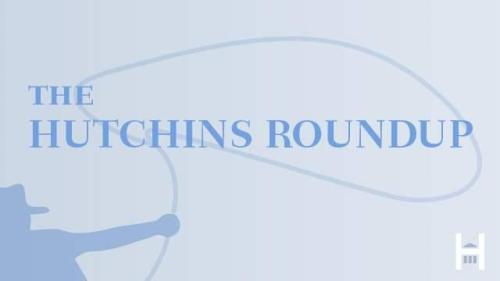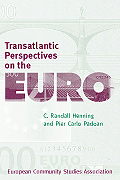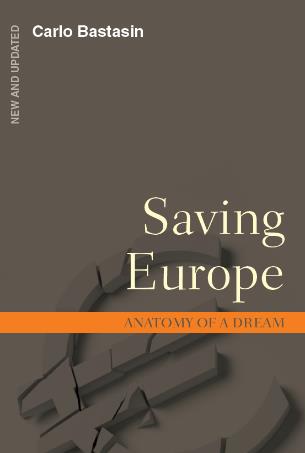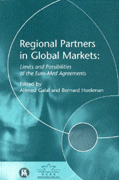Studies in this week’s Hutchins Roundup find that euro-area inflation expectations are now less anchored, temporary price level targeting would improve macroeconomic outcomes when interest rates hit zero, and more.
Want to receive the Hutchins Roundup as an email? Sign up here to get it in your inbox every Thursday.
Euro-area inflation expectations are less anchored after persistently low inflation
Euro-area inflation has remained well below 2 percent since early 2013, deviating from the European Central Bank’s target of below, but close to, 2 percent inflation. Juan Angel Garcia of the International Monetary Fund and Sebastian Werner of the Louvain School of Management examine a widely used measure of euro-area inflation expectations, the five-year forward inflation-linked swap rate, to investigate whether the recent period of below-target inflation has reduced market confidence in the ECB’s ability to hit its inflation target. In other words, have euro-area inflation expectations become less anchored? The authors’ answer: Yes. They find that, over the past five years, inflation expectations have responded more than they did before 2013 to early inflation estimates for Germany, Spain, and the Euro-area. This increased responsiveness suggests that euro-area inflation expectations are now less anchored, the authors argue, because anchored long-term inflation expectations should not respond to short-term news.
Temporary price level targeting would improve macroeconomic outcomes at the effective lower bound on nominal interest rates
When short-term nominal interest rates are at their effective lower bound, central banks lose the ability to cut rates further, and must turn elsewhere to stimulate the economy. In 2017, former Federal Reserve Chair Ben Bernanke (now a distinguished fellow at the Hutchins Center) suggested temporary price level targeting as an alternative to conventional inflation targeting. Under a temporary price level target, the Fed sticks to its 2 percent inflation target in normal times, but switches to a price level target when rates hit the effective lower bound, which essentially would lead the Fed to aim for above-2 percent inflation for a time following a period of below-target inflation. James Hebden and David Lopez-Salido, of the Federal Reserve Board, use the Fed’s FRB/US macro-economic model to compare the effectiveness of Bernanke’s temporary price level target with a standard Taylor Rule. The authors find a temporary price level target does a better job of stabilizing inflation and unemployment over the business cycle than other policy rules, especially during severe recessions and the subsequent recoveries when the policy rate is constrained by the effective lower bound. A drawback is that a temporary price level target increases the chance that the economy overheats in the aftermath of a recession, the authors say.
Eliminating tax havens reduces domestic investment and employment
Juan Carlos Suárez Serrato of Duke University finds that eliminating tax havens may have unintended consequences. He shows that the 1996 repeal of Section 936, a tax code provision that essentially exempted Puerto Rican affiliates of U.S. firms from corporate taxes, raised the effective tax rate of affected U.S. firms by about 10 percentage points. By comparing firms exposed to the repeal with similar unexposed firms, Serrato finds that the repeal led exposed firms to reduce their U.S. investment by 38 percent and their U.S. employment by 1 million jobs. In addition, geographic areas containing more firms exposed to Section 936 experienced slower employment and wage growth and received more in government transfers than less exposed areas after 1996. These findings challenge the view that profit shifting mostly affects tax revenues rather than real economic outcomes, says Serrato.
Chart of the week: Since April, the dollar has appreciated steadily relative to the currencies of U.S. trading partners

Quote of the week:
“[Q]uestions exist about the natural rate of unemployment and the slope of the Phillips curve and whether these concepts remain relevant in today’s economy. The fact that inflation has been relatively stable even as the unemployment rate has fallen well below estimates of its longer-run sustainable level suggests that either the Phillips curve is unusually flat or, perhaps, obsolete. That said, monetary policy is currently testing the limits of how low unemployment can go without causing an undesirable increase in inflation,” says Esther George, president of the Federal Reserve Bank of Kansas City.
“Monetary policy is further complicated by the extraordinary actions central banks took to promote growth during and after the global financial crisis. When unemployment was high and inflation was low relative to our targets, the Federal Open Market Committee (FOMC) greatly expanded the Feds balance sheet and provided forward guidance to the public that policy rates would be kept low for a prolonged period. I don’t dispute that some of these policies may have helped get us to where we are today. But now that the FOMC has largely achieved its objectives, the costs of these extraordinary policy actions are becoming apparent. Even though we have begun to gradually normalize the size of the balance sheet, it remains exceptionally large by historical standards. It is still likely putting downward pressure on longer-term rates, working at odds with efforts to achieve policy neutrality. In addition, keeping rates low for long has resulted in a policy stance that remains accommodative in the face of tight labor markets and inflation at the FOMC’s goal.”










Commentary
Hutchins Roundup: Euro-area inflation expectations, temporary price level targeting, and more
July 26, 2018